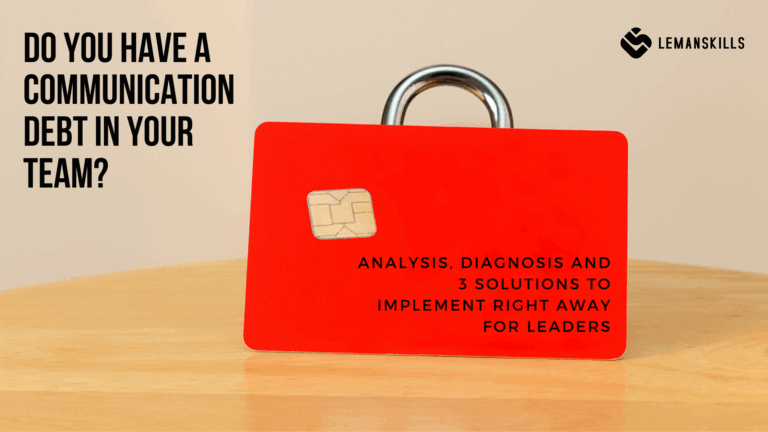Why people accept being leaders? Is this something we dream about as kids? When we get the question: “Who you would like to be when you grow up?”, do we answer: “A middle manager in the huge, global organization”?
Is it a matter of a “natural talent” we have and show as children to lead or maybe a set of skills that every person can learn and then use quite successfully?
Why is that some people are great leaders for their teams and the others (statistically bigger representation) are making people miserable and in consequence: quitting?
Let’s unpack this subject today.
The Story of One Tech Leader…
I work a lot with First Time Managers. Those are people who are fresh in leadership positions, statistically up to 3 years in the role. Most of the time there were great SMEs (Subject Matter Experts) and a natural move for them to grow was to be offered with a Team Leader role of the team there work in.
I remember very well one story that relate to a Tech Leader I worked with in the mentoring process a couple years back.
He was a very skilled expert in one of the leading technologies that was used in the core product of the company. He started as a junior, but learned very quickly, constantly participating in trainings, conferences and projects, working on different implementations and most of the time building functionalities from scratch. When he grew to the expert position, he also got the task of teaching others, onboarding new team members and acting as a technical mentor to them. He was doing great.
Then, as an obvious offer for the organization he got a proposition to become a Team Lead of the team: the same one that he was an expert within. He took the job: the money wasn’t extremely bigger, but potentially more organizational and strategic impact was an argument that he was sold to. He thought: “I know everything about the scope of the team’s work, what else can there possibly be?”
A few weeks later in the role showed him otherwise. He started to be a completely different person: like he had some hidden personality that was there, waiting to be awaken for so long. He started to be mean to team members, getting angry and mad very quickly when he saw any mistakes or imperfections in what the team delivered. He even got constructive feedback, by name on team daily meetings: what was unacceptable and never happened before. The team engagement started to drop; first people made decisions about leaving the area that they loved working within.
That was the moment when he was redirected to me, so I support him in this situation.
Why People Accepting Leadership Roles?
This story shows us a few aspects of why we accept those roles connected to People Management when they are on the table. What I see from working with different cases and circumstances, there are 5 reasons that are the most common: I would say they cover 80% of all decision about choosing this career path:
1. The only way to grow. Sometimes people don’t see other options. They think that accepting leadership position is the only way they can be promoted or have possibilities to learn. Either is their strong belief that can have a root even in childhood (if it was a home conviction, being expressed loudly so we picked it up as children and we took it for life) or an experience from different organizations from the past. Sometimes it is true that organizations offer more, i.e. trainings, workshops, mentorship opportunities for leaders. It shouldn’t take place, so if you see if, I would advise to reach out your supervisor or HR person to take a closer look on that.
2. Fancy position name. Team Lead, Manager, Director, Head: the higher in the structure, the fancier it sounds. And the better it looks on LinkedIn or the resume. Potentially of course. The question is: do you want to grow in the leadership space in your current and different organizations on the market in the future? If yes, ok: the name of the positions matters, since recruitment process is marketing process (for both sides). If not: it doesn’t really matter. So, first: go and answer this question.
3. More potential influence / power. Sometimes we take leadership positions because we believe that’s the only way to make a real change. To get a seat at the table, to have opportunities to say things out loud, to be an advocate of what we say as a team. To have more positive influence or power to reshape a work environment, even if it’s just a small piece of it. The question is: is it a really a truth that by changing the role to be a leader, you will have this influence, more than you have as an expert?
4. Better visibility. I hear this one a lot. And it’s connected with the more influence and power element described above, sometimes treated as one thing. “If I’m a leader, I’ll be more visible = I’ll have more credibility to make a real change.” It also comes with the visibility on the market or in the specific part of the industry: when I’m a leader, I will be more reliable, my LinkedIn will blow out and I will have countless invites as an expert / speaker / podcast guest etc. Is it really a truth? Can’t you be all of these as a real expert in your area?
5. More money. Here comes a catch. The money part most of the time comes at the very beginning of the list of reasons on why to accept the leader role. And you know what? It’s not always the case. I saw multiple examples of extremely skilled, well-known experts that earned way more money than their supervisors. Because their skillset was super niched out, and there were literally few people in the area that could’ve done what they were skilled at.
So, the real question is: what are you passionate about? What you can do all day, in the flow state, sometimes even forgetting about going to the bathroom or eat properly because you’re so into the process? If it is being a leader, taking care of the team’s work environment, give feedback and recognition, organizing the work, solve conflicts and misunderstandings every single week? If yes, that’s great: you have a lifetime of learning ahead of you to be a leader that people don’t quit.
If you are passionate about something else: being a developer, analyst, accountant, employer branding or an expert in a chosen marketing area, the leadership job is not for you. You can’t have the cake and eat the cake.
Why?
What Are the Consequences of Hating Being a Leader?
When we take leadership position and we really don’t want to deal with people, there is a high probability that we are going to make ourselves and our people miserable.
1. You won’t want to learn. Leadership skillset is quite different that the SME skillset. Yes, you can use some of the skills that you’ve acquired over the years of being a specialist, but the truth is that there are a lot of things you’ll do as a leader that you’ve never done as a non-leader. And if you don’t have a heart to it, you will reject the opportunities to learn, you won’t be willing to get new knowledge and tools to put it into practice.
2. Your frustration will influence your people. The influence of a leader on a team is bigger than we think. If we are frustrated, angry, disappointed as leaders, our people will get there too. Even when the circumstances of those emotions or reactions are different than ours, they will behave in a parallel way. Our fixed mindset will become their fixed mindset. You won’t be an advocate of the organization if you are not in the right place: and you won’t’ help your team to thrive.
3. If you hate your job, your team will their too. It is quite visible when someone loves what they do professionally. We see the passion and energy when a person talks about it, we see how much time they spend on working on some tasks, learning about the field, participating in conferences, meetups, workshops etc. It’s inspiring: even if our area of expertise is different, those behaviors itself are making a positive impact. If it’s not there, the person whines all the time on how hard it is, how exhausted they are, how pointless is everything we do here… You see the difference.
So… What is the Conclusion Here?
The conclusion is simple: you need to decide if you want to be a leader. It’s one way or the other, there is no other option here. When you decide: yes, I want to be a leader, you go all in. You delegate SME tasks, and you learn how to be a real leader for your people.
When you decide: you know what Alex? I really don’t want to be a leader: I want to do my SME tasks and grow in this space. That’s great! You can expand in the current scope or learn new things to become a broader expert. Or pivot a little bit and learn something new, reskill yourself. That’s fine as well!
What if you’ve already made a decision about being a leader and you know now that it was a bad decision?
Quit.
It’s nothing wrong with it, it doesn’t mean that you are a weak person. It means that you are a brave person, who took time to really get to know yourself and is mindful about yourself and others. It means that you don’t want to be miserable for the 60% of your life (that’s approximately how much time we spend at work: doing and thinking about it). Don’t listen to other people who say that you should suck it up and just hang on there to get another promotion in 2 years. It’s not worth it.
But working on what you are passionate about every single day? I bet it’s quite the opposite.
PS 1. You want to know what happens with the manager from the story? After few mentoring sessions with me, he had decided to quit being a leader to come back to the SME role. And you know what? He’s never been happier in his life.
PS 2. If you want to expand more on the topic from this article, go check out my newest course “3 Ways to Be a Leader that People Don’t Quit”!





